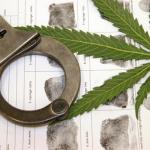The War on Drugs Is a War on Kids
https://portside.org/2013-02-15/war-drugs-war-kids

Portside Date:
Author: Patricia J. Williams
Date of source:
The Nation

On a warm spring afternoon at American colleges, the intoxicating aroma of surely medicinal marijuana will be floating like a soft caress in the breeze, and hard-working students will be stocking up on amphetamine cocktails to sharpen their overstressed young minds for the coming exams.
On a warm spring afternoon at the nation’s poorer public schools, children (and I mean children) will endure a daily police presence, including drug-sniffing dogs, full-body pat-downs, searches of backpacks and lockers, stops in the hallways—all in the name of searching for contraband.
Drugs are ubiquitous in this country, and yet we know that some people have the privilege of doctor-prescribed intoxication, while others are thrown into dungeons for seeking the same relief. We know that the war on drugs is heavily inflected with Jim Crow–ism, economic inequality, gun culture myths and political opportunism. We know that Adam Lanza’s unfortunate mother was not the sole Newtown resident stocking up on military-style weapons; plenty of suburban gun owners keep similar weapons to protect their well-kept homes against darkly imagined, drug-addled marauders from places like Bridgeport. We divert resources from mental health or rehab, and allocate millions to militarize schools.
The result: the war on drugs has metastasized into a war on children.
Best publicized, perhaps, is the plight of young people in Meridian, Mississippi, where a federal investigation is probing into why children as young as 10 are routinely taken to jail for wearing the wrong color socks or flatulence in class. Bob Herbert wrote of a situation in Florida in 2007, where police found themselves faced with the great challenge of placing a 6-year-old girl in handcuffs too big for her wrists. The child was being arrested for throwing a tantrum in her kindergarten class; the solution was to cuff her biceps, after which she was dragged to the precinct house for mug shots and charged with a felony and two misdemeanors.
In New York City, kids who make trouble are routinely removed from school altogether and placed in suspension centers, holding cells or juvenile detention lockups. In the old days, you got a detention slip for scrawling your initials on a desk. Now a student can be given a summons by a school police officer. If the kid loses it or doesn’t want to tell his parents, it becomes a warrant—and a basis for arrest.
According to the New York Civil Liberties Union, some 77 percent of New York’s school police interventions are for noncriminal matters like having food outside the cafeteria, having a cellphone or being late. Other minor offenses like shouting, getting into petty scuffles or being on school grounds after hours fall into the category of “disruptive behavior”—an offense that can get a student suspended. Just 4 percent of police interventions are in response to “major crimes against persons.”
But what’s a teacher to do? In New York City, police officers outnumber guidance counselors by more than 2,000.
Yet as Newtown should teach us, we love our guns as much as we love our drugs. We know that even our best efforts at gun control will not undo a simultaneous and enthusiastic installation of armed overseers in our public schools. As such forces grow exponentially across the country, we keep them busy by installing zero-tolerance policies that take disciplinary discretion out of teachers’ hands and put it in the hands of law enforcement officers with little to no training in child psychology, mediation or anger management. Indeed, the NYCLU recently filed a complaint after the NYPD arrested Mark Federman, the principal of East Side Community High School, for intervening as the in-school officers hauled away an honor student.
This “school-to-prison pipeline” has emerged suddenly. Over just the last two decades, we got scared. We sent guns and billy clubs into our schools on purpose. We provided federal funds for massive surveillance systems—for cameras like they have in Oakland, monitoring every inch of school life from a command center. We slashed budgets for books, salaries, computers, psychologists, librarians and buildings. We dealt with classroom overcrowding?by segregating those with learning difficulties, shunting them into tracks where they have no chance.
On top of that, we instituted blunt metrics by which teachers lose pay or even their jobs depending on student outcomes. If scores aren’t good—regardless of how difficult the students’ life circumstances or language challenges or learning disabilities—?it is teachers who are held responsible. With so much at stake, calling the school police is one way to remove lower-performing students from the classroom on high-stakes testing days.
And with the police being given incentives for making a large number of arrests, why wouldn’t the rational officer bring charges of “disturbance of education” or disorderly conduct for catfights in the hallways, when he might beef up his salary with the easy frog-march of juvenile perps to the precinct?
The most vulnerable targets may be children of color, but this war on kids is a war on all children. Ultimately, the lack of due-process protections and human dignity in ghetto schools leaches into suburban schools. It doesn’t really matter whether one side views it as protecting against the dark side with zero-tolerance strip searches for ibuprofen, while the other side experiences it as an annexing of the prison-industrial complex onto daily life. Criminalizing children will have constitutional implications for generations to come. It is corrosive and rends the fabric of our erstwhile civil society, makes a lie of equal opportunity, and rewards authoritarian personality disorder at the expense of our humanity.
About the Author Patricia J. Williams is a professor of law at Columbia University.
